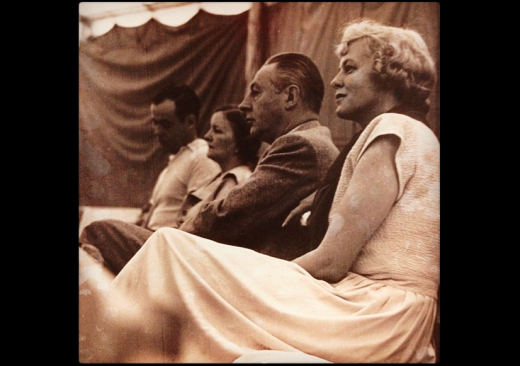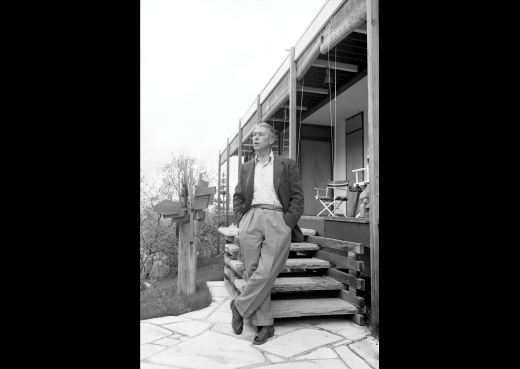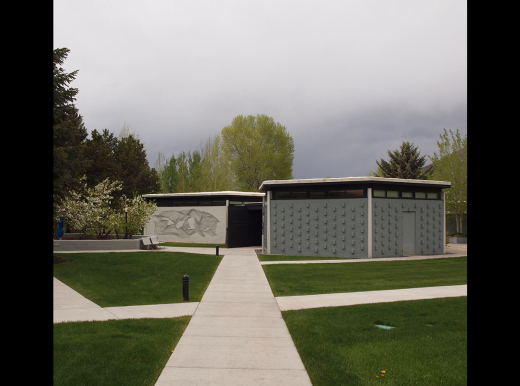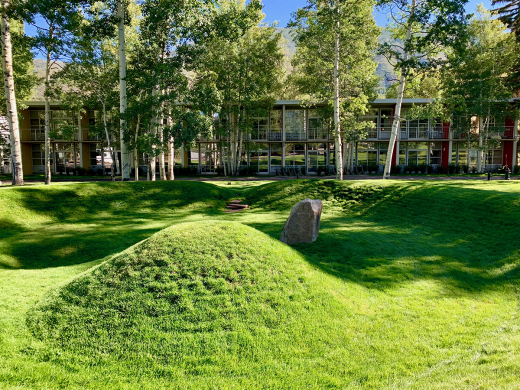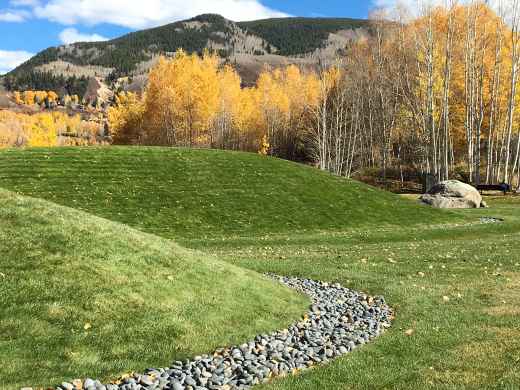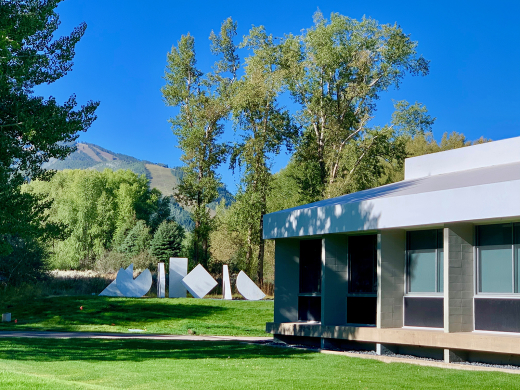Rocky Mountain Modern Part Two:
Herbert Bayer and the Aspen Institute
In 1939, Elizabeth Paepcke came to ski in Aspen. It was a sleepy town, barely 700 in population, that existed on ranching, farming, and remnant mining; a very different town than the city of 1892 with a population of 12,000, at the height of the Colorado Silver Boom. That era ended abruptly with the repeal of the Sherman Silver Purchase Act, which decimated the silver mining industry in Aspen.
When Elizabeth visited, a small ski area had already been developed at the junction of Castle Creek and Conundrum Valley. In 1936, Ted Ryan formed the Highlands Bavarian Corporation and built the first Aspen area ski lodge. The ski area grew, races were held, and the ski area started to gain international recognition.
Then in 1943, with a World War raging in Europe and increasing US involvement, Ted Ryan offered his lodge and property to the US Army for $1 for the training of ski troops. The 87th Mountain Battalion eventually moved to Camp Hale, outside of Leadville, for training as the 10th Mountain Division. Most of skiers from the Bavarian Corporation joined the 10th Mountain Division and eventually fought in the Italian Alps. Many perished but of those who didn’t, a large number returned to Aspen.
Elizabeth didn’t return to Aspen until 1945 when she brought her husband Walter Paepcke, a wealthy Chicagoan, to the still-empty town, but Walter saw in it the potential to embody his vision as a gathering place for thought leaders, artists, and musicians from all over the world. Walter’s ‘Aspen Idea’ was ‘mind, body, spirit’, a place where leaders and artists could expand their minds through academic offerings, sustain their bodies with Colorado outdoor experiences, and inspire their spirit in the extraordinary Aspen setting. To put his plan in motion, he first formed the Aspen Skiing Company in 1946. He then invited the Bauhaus-trained artist Herbert Bayer and his wife Joella to spend Christmas of 1946 in Aspen. He offered Bayer the job of designing and implementing his vision in Aspen through the newly formed Aspen Institute for Humanistic Studies, now the Aspen Institute.

